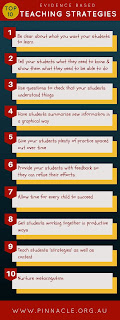Good morning all,
In this opportunity, I would like to focus on “READING” theories, approaches, strategies, ideas, etc.
Why Teach Strategies?
Effective teachers have an understanding of how reading occurs and are able to plan learning experiences and instruction that support students to become more successful readers. Teachers play an important role in ensuring that all students build up a bank of knowledge that can be accessed during the reading process.
Predicting
Predicting helps readers to activate their prior knowledge about a topic, so they begin to combine what they know with the new material in the text. Predictions are based on clues in the text such as pictures, illustrations, subtitles and plot. Clues for predictions will also come from readers’ prior knowledge about the author, text form or content. Students should be able to justify the source of their predictions. Readers can be encouraged to make personal predictions before and during reading.
During reading, effective readers adjust and refine their earlier predictions as new information is gathered and new connections are made. Predictions are usually related to events, actions or outcomes and will be either confirmed or rejected once the text has been read. Students can also use predicting to identify unknown words either before or after decoding. These types of predictions are usually based on the context clues; students need to determine whether the word makes sense in the text.
Connecting
Efficient readers comprehend text through making strong connections between their prior knowledge and the new information presented in text. Activating each student’s prior knowledge before reading is important. However, students need to be able to continue to use this strategy during reading to continually make connections as they read.
Keene and Zimmerman (1997) categorise the type of connections made by efficient readers.
• Text-to-Self Connections: involves readers thinking about their life and connecting their own personal experiences to the information in the text.
• Text-to-Text Connections: involves readers thinking about other texts written by the same author or with common themes, style, organisation, structure, characters or content.
• Text-to-World Connections: involves readers thinking about what they know about the world outside their personal experience, their family, or their community.
It is important that readers learn to refine and limit their connections to those that help them understand the text better. At first, students may make connections that have little relevance to helping comprehension. By discussing connections, students will be able to focus on how making relevant connections leads to an understanding of texts.
Comparing
Making comparisons relates closely to the connecting strategy. As students make connections between the text and self, the text and other texts or texts and the outside world, they also begin to make comparisons.
Making comparisons involves students thinking more specifically about the similarities and differences between the connections they are making. When students make comparisons they may begin asking questions, e.g. How is this different to what I do? How is this text the same as the other one I read? How is this information different to what I believe about this issue?
Inferring
Efficient readers take information from a text and add their own ideas to make inferences. During the process of inferring, readers make predictions, draw conclusions and make judgments to create their interpretations of a text. Making inferences allows students to move beyond the literal text and to make assumptions about what is not precisely stated in the text. Inferences made by students may be unresolved by the end of text, neither confirmed nor rejected by the author.
Synthesising
When comprehending text, efficient readers use synthesising to bring together information that may come from a variety of sources. Synthesising involves readers piecing information together, like putting together a jigsaw. As students read and use synthesising, they stop at selected places in a text and think about what has been read. This encourages them to keep track of what is happening in the text. Students who are consciously aware of using this strategy are able to continually monitor their understanding of text. During the process of synthesising, students may be connecting, comparing, determining importance, posing questions and creating images.
Source: Reading Resource Book











0 comments:
Post a Comment